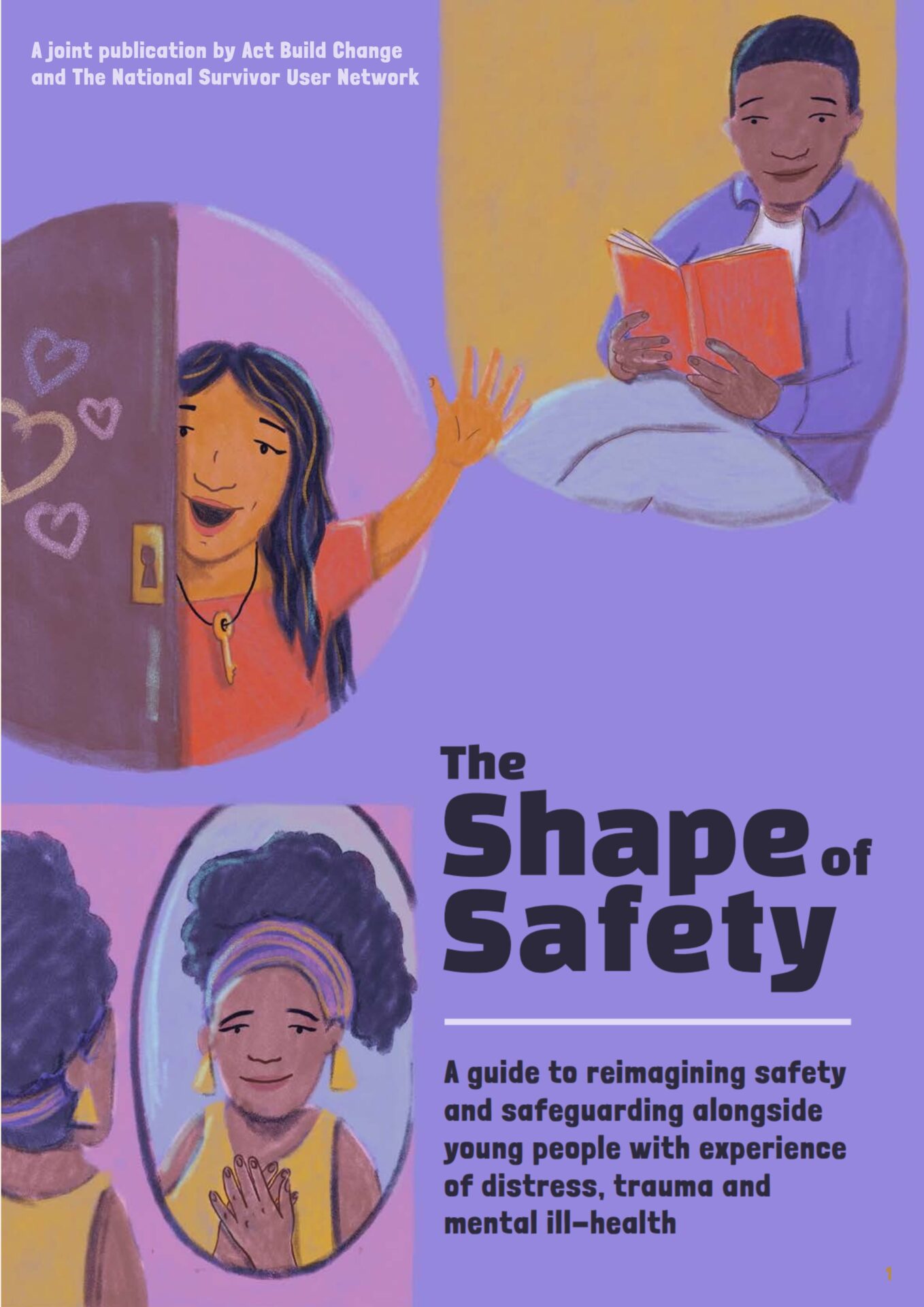
This document is a guide to reimagining safety and safeguarding alongside young people with experience of mental ill-health, trauma and distress.
Safeguarding processes can often harm rather than protect. This guide offers principles and examples, reflective questions, and a practitioner’s checklist designed to support those working alongside young people who want to move their safeguarding practice and organisational cultures to a more collaborative, trauma-informed and anti-oppressive model.
The guide is the result of a project undertaken by NSUN and Act Build Change in partnership with Revoke and Voice Collective. The work was funded by the Blagrave Trust.
Alternatively, click here to download the guide as a Word document
About the guide
This guide is the result of a collaborative project by NSUN and Act Build Change in partnership with Revoke, a grassroots organisation advocating for the rights and welfare of displaced young people, and Voice Collective, a project that supports young people who hear voices, see visions, or have other sensory experiences or beliefs.
NSUN and Act Build Change held workshops on reimagining safeguarding with staff and young people from Revoke and Voice Collective, and have presented the insights from these workshops in this guide.
This work developed from observations from practitioners that young people with experience of mental ill-health, trauma and distress are being failed and disempowered by safeguarding systems meant to keep them safe. For example, risk-averse organisations can fail to sit with expressions of distress, which means that people can worry about not being able to talk about their feelings through fear of being dismissed, pathologised, detained, coerced, or criminalised, or directed into systems that have previously caused them harm, such as the mental health system.
Revoke and Voice Collective have created transparent, trusting relationships which help young people who have experienced trauma, including institutional harm within the immigration and mental health systems to make their own decisions, support each other, and challenge the status quo.
This guide shares and celebrates methods of fostering cultures of safety and care that foreground lived experience, young people’s agency and anti-oppressive practice. The guide also names tensions and challenges that can arise in this work, and shares approaches to help navigate them.
How to use the guide
We hope this guide’s principles for better practice, reflective questions, and practitioner’s checklist can be a toolkit that supports practitioners to create change in their own organisations. It can be used to start conversations about safeguarding processes in many contexts, for those supporting others of any age, from grassroots user-led groups approaching safeguarding for the first time to larger charities and institutions with already-established safeguarding processes.
What does the guide contain?
The guide explores the following principles and themes for creating safer practices and cultures:
- Building autonomy – building power by sharing knowledge; the importance of transparency and boundaries; avoiding false empowerment
- Working relationally – consideration of lived experience; seeing people, not problems or stereotypes; cultivating broad support networks
- Space for uncertaining and learning from mistakes – differentiating between emergency and discomfort; working collectively, with support for staff and a non-punitive ethos; extending that non-punitive ethos to young people
- Addressing oppression and harm – acknowledging the realities of young people’s lives; resisting harm in safeguarding practice; building solidarity to shift power
For each theme, a collection of reflective questions are offered to help practitioners think through the practices at their own organisations.
Towards the end of the guide, a practitioners’ checklist brings together a page of actions that can be taken to improve approaches to safeguarding practices and to move towards more caring and safe cultures.
